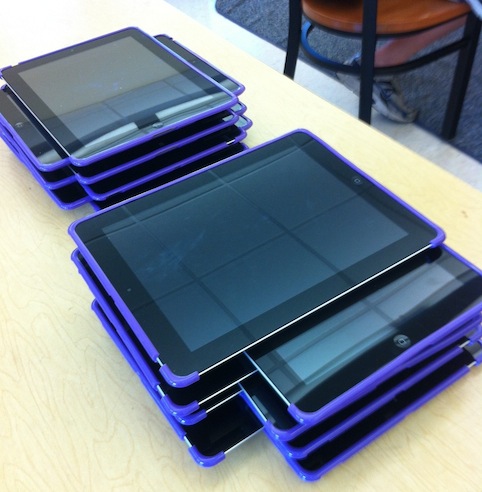New Thing #127: Administering Standardized Tests On An iPad
 At the school where I teach, we give a standardized test each year.
It's very low stakes - my approach to it is always that it's more a chance to expose the students to these types of tests rather than being a test of what they know.
At the school where I teach, we give a standardized test each year.
It's very low stakes - my approach to it is always that it's more a chance to expose the students to these types of tests rather than being a test of what they know.
(I do like to use the scores as a chance to assess myself and how I'm doing teaching certain skills.)
This year, though, for the first time since I've been teaching (just about a decade) the tests were given on iPads rather than a test booklet and answer sheet.
It was a different experience.
First of all - I do not regularly use an iPad.
I have used iPads, but we don't own one, and my use has been sporadic.
The funny thing about giving the tests this way is that the students are probably more comfortable with the iPads at this point than I am.
But there's still a certain anxiety that comes with doing something new with something that's viewed as so important. (Despite my efforts to downplay the tests in general - and especially with the new format this year - it still is something the students tend to take seriously. It means a lot to them.)
Overall, the process went smoothly. It was cool because as the test administrator I could see where each student was as they progressed through the test, and I could also check general results much more quickly than in the past. (I have yet to find out how I could see a question-by-question breakdown of the results, which is a more valuable way of assessing the work done, in my opinion.) It's also pretty much child-proof - it's like they know lots of 10 and 11-year-olds would be taking the test! If a student accidentally pops out of the test session, we can put them back in very easily and they pick right up where they left off.
What I didn't like was that there are certain aspects that go against how students have been taught to take these tests in the past - no longer could you cross out the answers you were eliminating. This particular test structure was also weird in that sections that had about 40 or more questions would stop you halfway through before you could proceed to the next half. That meant once you advanced to question 22, you could not go back to check numbers 1-21. That seemed to also go against what we try to get kids to do.
In the end it's probably a wise shift to make at this point - I imagine by the time this year's fifth graders are ready to take SATs they will have to do it online. And if not, it'll be graduate-level tests for sure. (When I took my GRE in 2003 or 2004 I had to take it on the computer.)
I don't know that administering this kind of test will be a skill I'll have to employ all that often. But I do know that as my daughters get to the ages where they'll have to take these types of tests, I'll probably be glad that I had a chance to experience it early on.
Unless by then there's a whole new technological way of taking standardized tests.